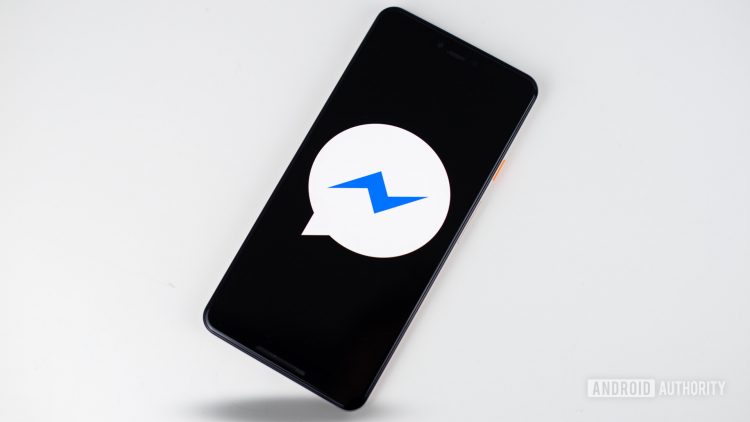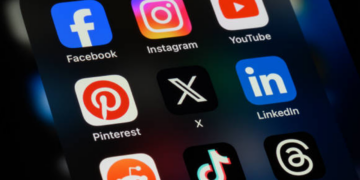“Lite” apps have been available for years now, but they took off with Android Go — an initiative to make cheaper, low-end phones for people in low-income countries. Part of the initiative was the development of lightweight apps that work well on phones with low RAM and low CPU power. It could’ve been a cut-and-dry benefit for everybody with an Android phone. Unfortunately, developers decided to be evasive about it.
Nowadays, many lite apps are only available in select countries or regions. More only work on midrange or low-end devices. There isn’t a lot of rhyme or reason to it, especially when the option to let everyone use an app is as simple as ticking a few boxes on the Google Play developer dashboard. It’s not the hottest or most controversial hot take, but lite apps are good, and they should be available to everyone.
There are even situations where people in developed countries with high-end phones can make use of a simpler, less resource-intensive version of an app. They may live in a rural area with poor reception or be in the middle of a natural disaster. Some people even travel to a poor reception area. The point is that folks in emerging markets aren’t the only ones who can benefit. Let’s talk about why.
Do you want Lite apps to be available to every phone and country?
46 votes
Apps’ resource usage intensifies
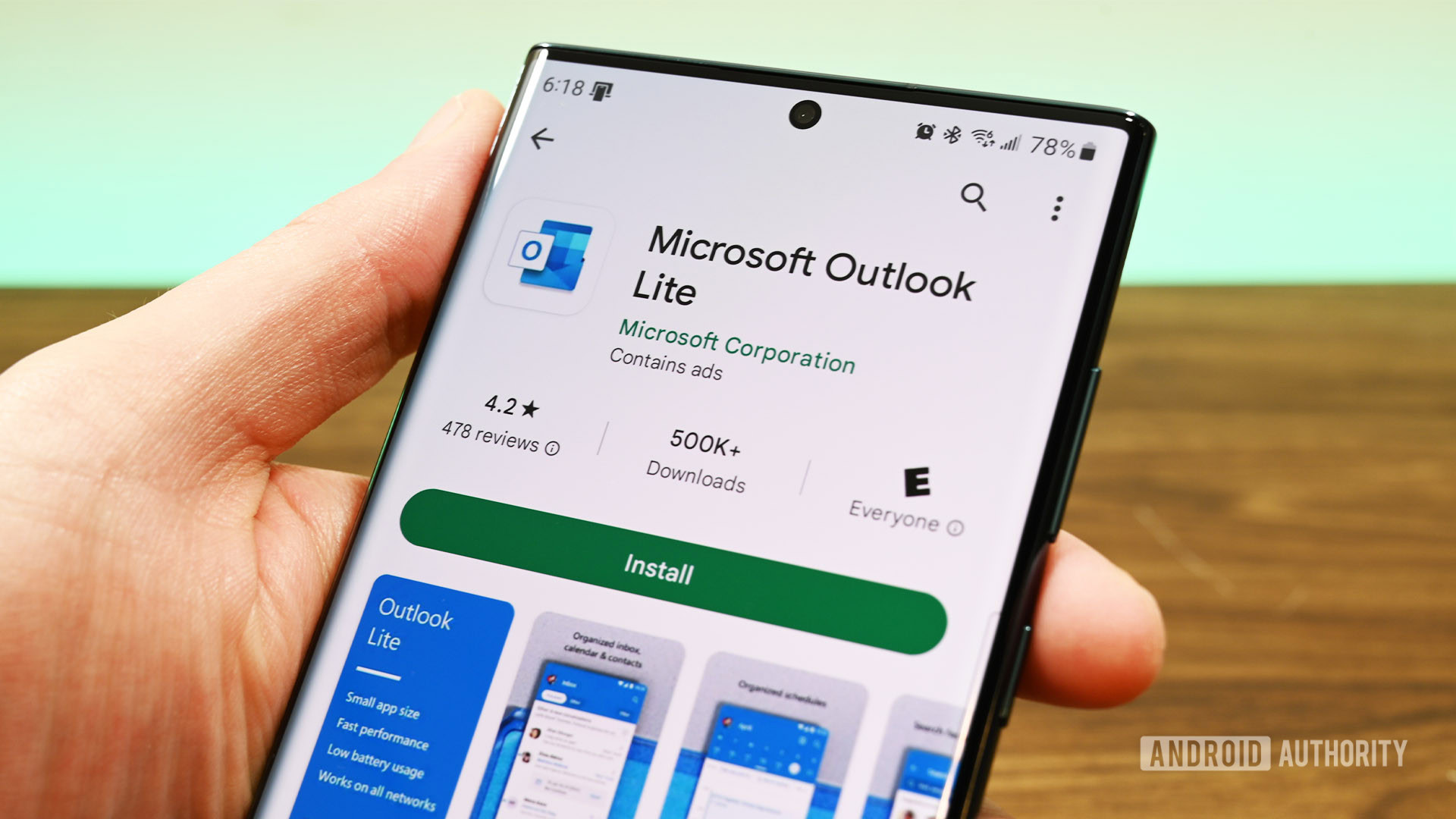
Joe Hindy / Android Authority
If I were to ask you what you think the most resource-intensive apps are on Android, there is a pretty good chance you’ll mention an app on this list. Those who don’t feel like clicking can probably guess the culprits: Facebook, WhatsApp, YouTube, Instagram, and Snapchat. You know them, the most popular mobile apps with the most downloads.
Those apps have topped similar lists for years. As technology becomes more powerful, every big company has taken full advantage by making its app(s) do more things, consume more resources, and eat more of your data. These apps even use more permissions than ever before, increasing the amount of collected data.
The larger batteries get and the more powerful hardware becomes, the more apps will take advantage of it.
This isn’t normally a big deal. After all, more resources and overhead mean more performance. The issue is that the net gains you get from buying new hardware are often nullified when developers keep adding extra stuff to use up those extra resources.
The end result is frustrating. We have more resources available in even low-end devices now than we had in any phone ten years ago, but low-end phones still feel sluggish when they really shouldn’t.
Same tasks, more resources
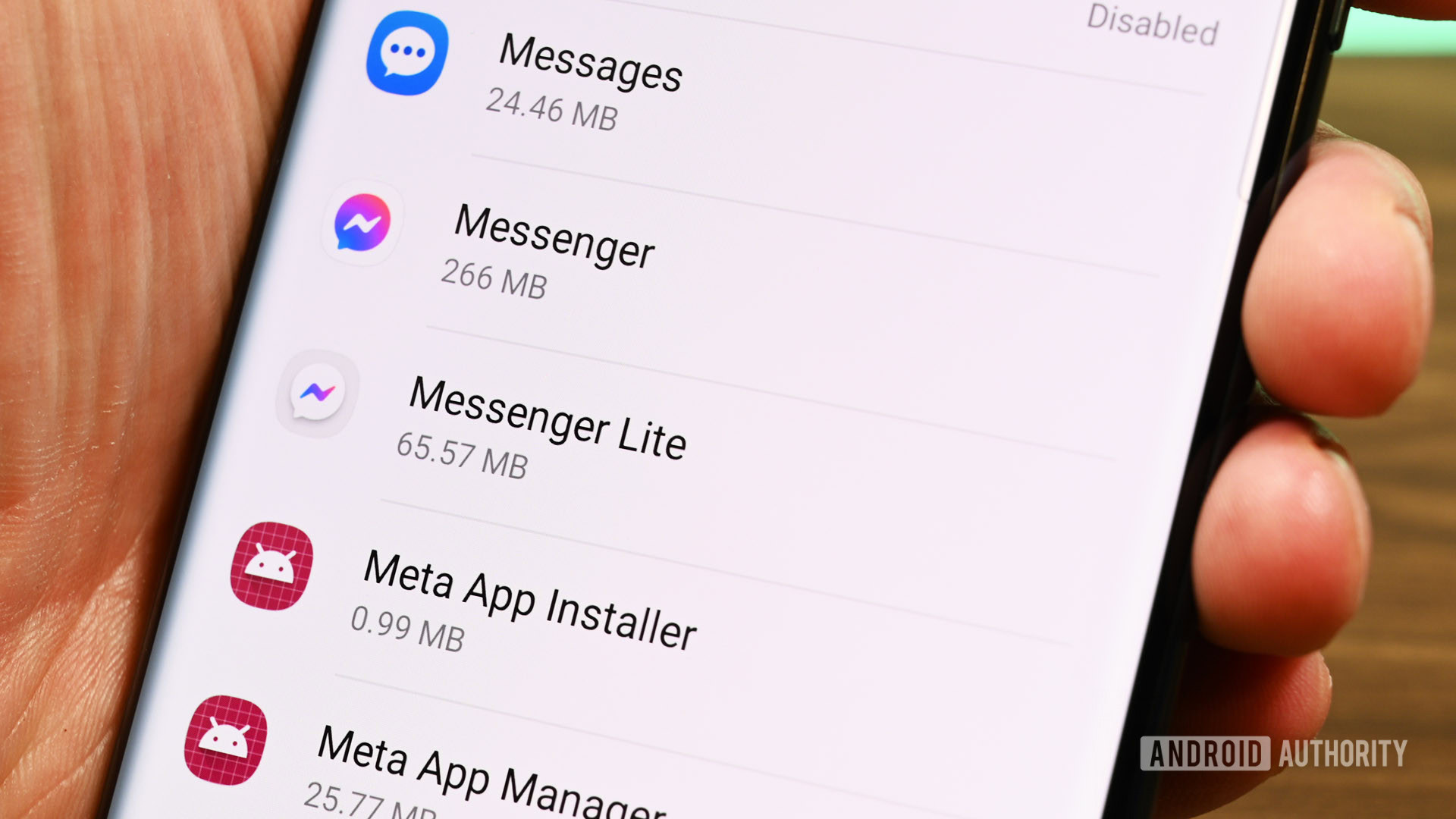
Joe Hindy / Android Authority
It’s one thing to just throw around statements like I just did above, but there is data to back it up.
Facebook is an excellent example of this. The full app preloads your feed in the background, so it’s always quick and responsive when you open it. Of course, that means it uses a lot of data and CPU cycles in the background. The install size is over 150MB, and it can reach 1GB or more without much trouble with pre-loaded posts and other data-hogging features.
The more CPU cores our phones get, the more CPU cores apps somehow require, despite performing the same tasks.
Facebook Lite, on the other hand, has an install size of less than 5MB, doesn’t preload your feed, and doesn’t auto-play videos unless you’re on Wi-Fi by default. It even uses about 25% fewer permissions than the full Facebook app. Yes, you do lose some other features, and scrolling your feed is a tad slower, but at least you know when Facebook Lite is using your data.
Facebook Lite simply runs less often and uses less data when you’re not in the app. The trade-off there is better battery life, less background usage, and fewer background tasks being performed. Those benefits would be nice to have on all phones, not just low-end ones.
What are the key differences? Facebook vs Facebook Lite
Most lite apps compare similarly to their full-sized counterparts as Facebook does. Developers target the wow factor over usability in most cases. After all, they’re trying to get you onto their app and keep you there for as long as possible, even if it means wrecking your battery life in the process.
Lite apps aren’t just better on resources. They are physically easier to use, with fewer required interactions to get to the important stuff.
Keeping with our Facebook example, most people need a whole tutorial on how to change basic settings within the regular Facebook app. For example, let’s walk through turning off auto-play videos in your news feed. You click on your profile picture, then Settings & Privacy, which displays a list where you click Settings again. Then, click on your profile picture again, then find Media and Contacts to finally get there. That is five layers of menus to change one setting.
Complexity, storage, and resource usage are significantly higher in full apps than in lite ones.
On Facebook Lite? Click your profile picture, then Settings. The option for Autoplay videos is on a rather lengthy list, but it’s still there after only two interactions, which is 60% less effort for the user. Optimizing for low usage often means developing more streamlined apps, which benefits everyone.
The point is that the difference between a lite app and a full app isn’t small. Complexity, storage, and resource usage are all objectively and measurably higher by a fairly significant margin in full apps compared to lite ones.
Zawinski’s Law
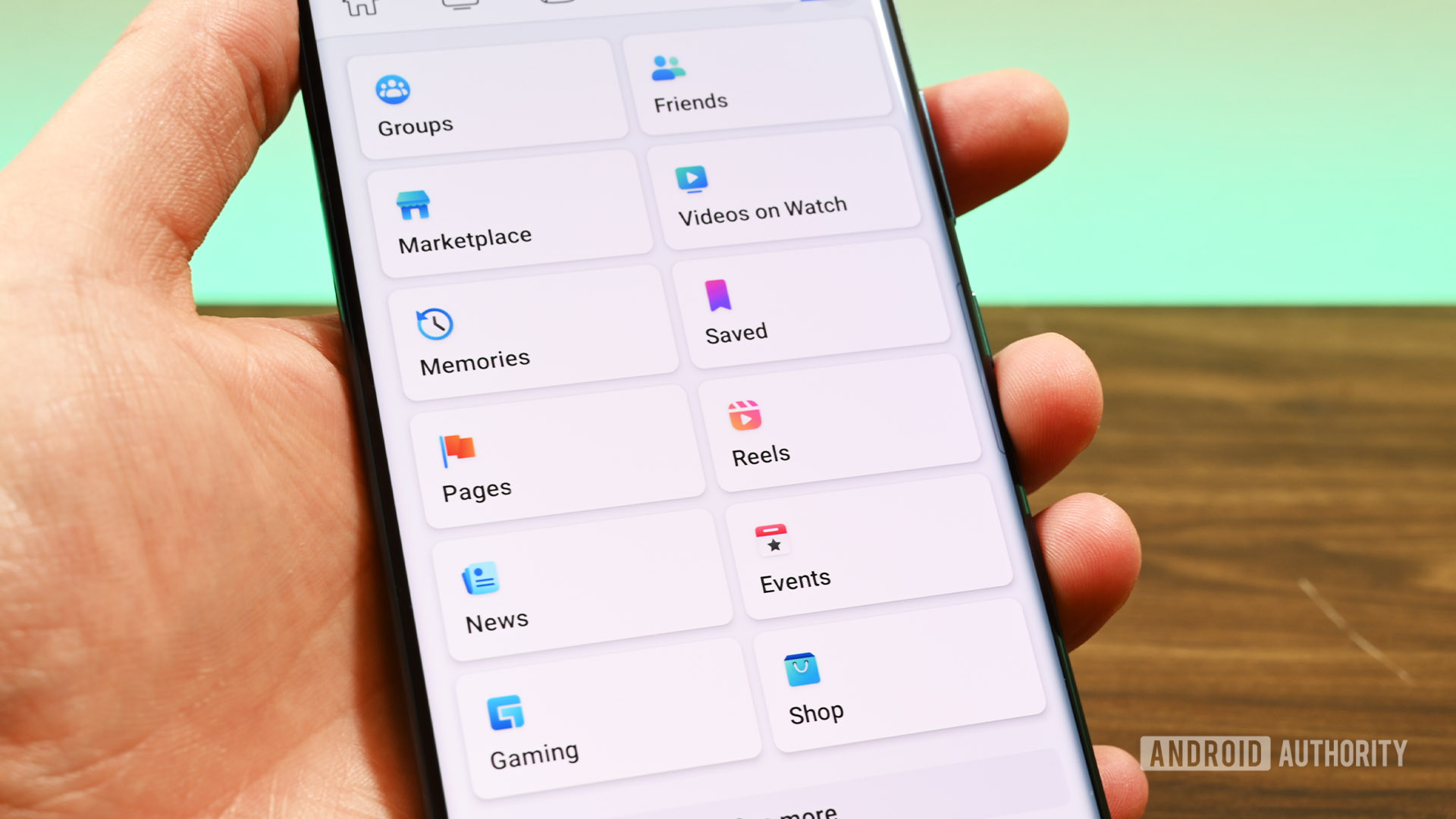
Joe Hindy / Android Authority
Wirth’s Law states that software gets more demanding faster than hardware gets more powerful. I think this law holds true, despite being almost 30 years old. Facebook is, after all, a top contender for the biggest resource hog of any mainstream Android app, and it has been for its entire existence on Android, despite massive leaps being made in hardware.
The lesser-known Zawinski’s Law applies a little better. The short version is that apps people spend a lot of time using have mounting pressure to expand until they can do everything. Let’s keep going by using Facebook as an example. At first, it was just a social network where you posted words, photos, and videos.
Apps where people spend time often try to expand to do everything, enticing people to never leave.
After a while, Facebook became a forum with its Groups feature, a messaging platform with Facebook Messenger, a video platform like YouTube, a shorts platform like TikTok, a live streaming platform like Twitch, a marketplace like Craigslist, and the list goes on and on.
Another example is Google Chrome. It started out as a browser, then became a web app platform, and the process continued until it became a whole operating system — Chrome OS. There are plenty of other examples. The point is that as apps expand beyond their original scope, so too does their resource usage, even if the needs of the end user don’t change.
There are a variety of terms for when developers do this kind of stuff. “Feature creep” is when software developers just keep tacking on extra stuff, even if it makes the app slow and bloated. “Creeping elegance” is when developers care more about how an app looks than how it works. It all circles into the same basic idea. These apps are massive, and they don’t need to be.
Lite apps counteract this pressure by bringing the core use of any given software back into focus. Facebook Lite removes a lot of the extras and provides a cleaner, less bloated, less resource-intensive app that does what most people hop on Facebook to do anyway. Not everyone needs a Twitch and Craigslist competitor, and we should have the ability to choose what our experience is.
There are also Progressive Web Apps that use your browser to run “apps” instead of installing them. We think it’s a technology with a lot of promise, but it still uses your browser, which can be just as resource intensive as a full app. The only thing you’re really saving is storage space.
The power of choice
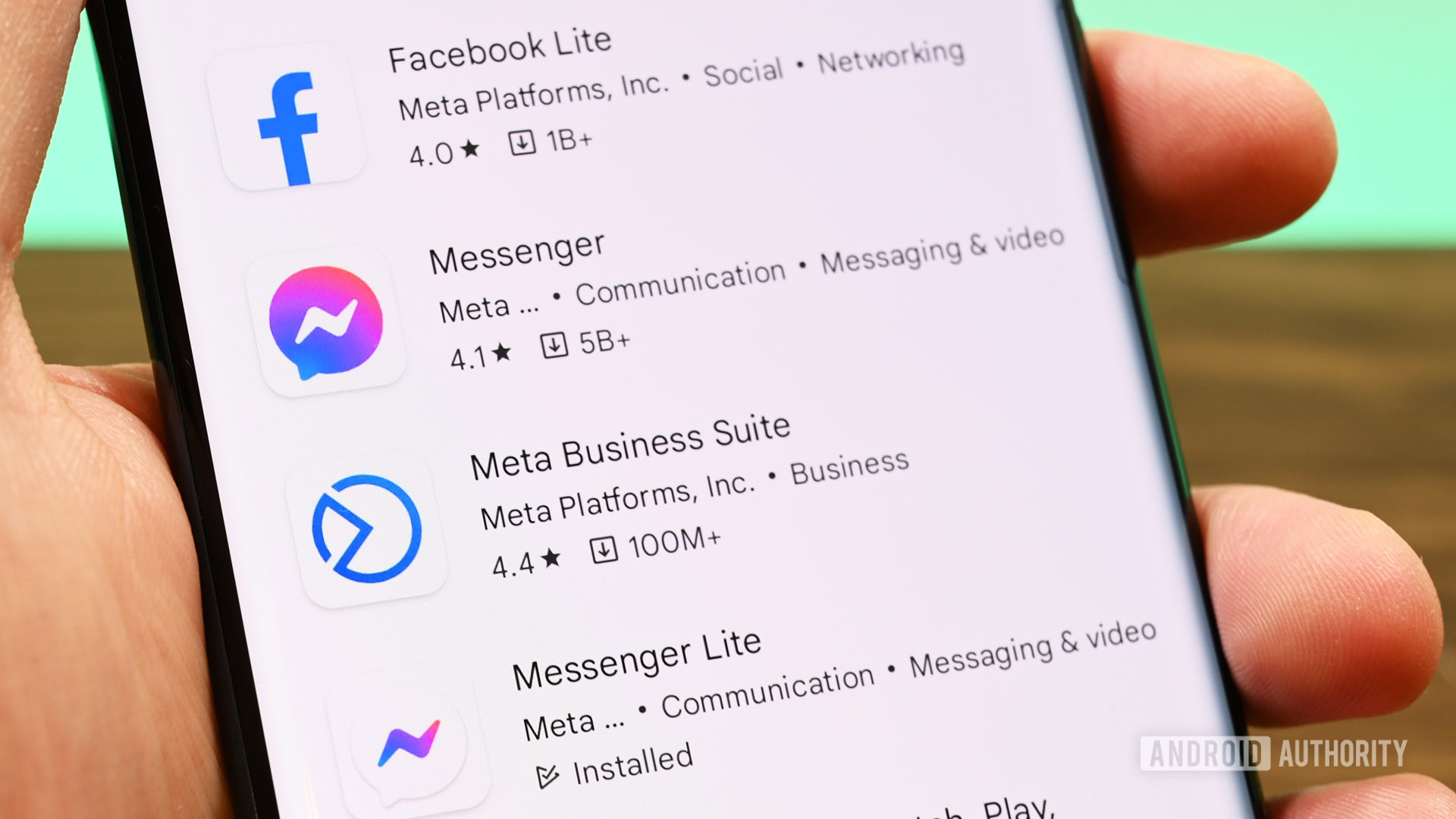
Joe Hindy / Android Authority
Now, I don’t think many folks will disagree with me that choice is good. A lot of people like the stock Facebook experience and use all of the app’s functions. However, the ability to drop down to a more basic experience doesn’t hurt anybody.
I know I’ve been picking on Facebook for this entire article. However, despite all of Facebook’s flaws, I can download and use Facebook Lite and Messenger Lite on my Galaxy S22 Ultra in the United States. As a matter of fact, Facebook is one of the few companies to make its lite apps widely available, which I both appreciate and take advantage of.
I would replace nearly every app in my app drawer with a lite version if I could. I simply don’t use any one service often enough to warrant the full app.
Unfortunately, it’s easy to understand why most companies keep their lite options exclusive to specific phones or parts of the world. Not only do they want you to use their do-everything apps to keep you engaged with their platform as long as possible, but they can serve you more ads and make more money. Lite apps make less money, but users shouldn’t have to dedicate significant resources to running a social media app, no matter where they live or what phone they own.
That’s bad for a company’s bottom line. These lite apps are intended to get the next billion smartphone users into the fold, and over time, those new users will be expected to migrate to the full experience. Still, it would be nice to have the choice.
Comments
Source by www.androidauthority.com






















